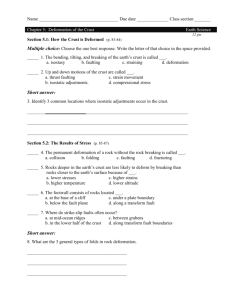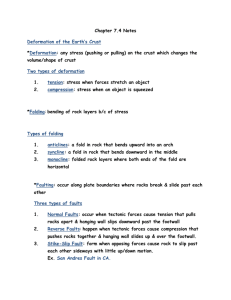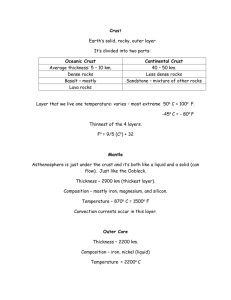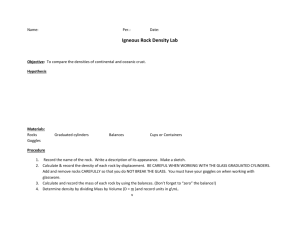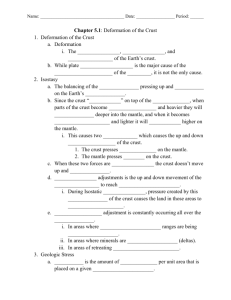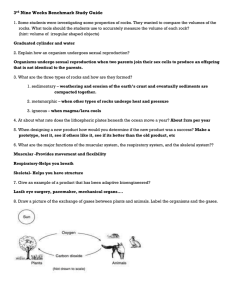1: How does the process of mountain building begin
advertisement
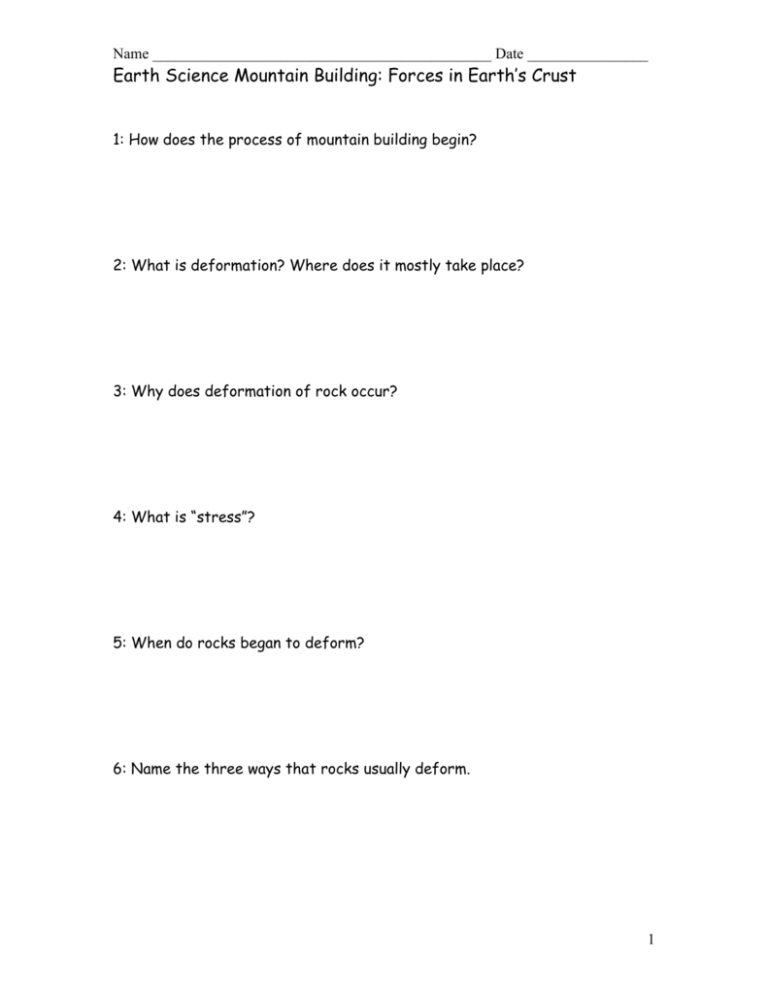
Name _____________________________________________ Date ________________ Earth Science Mountain Building: Forces in Earth’s Crust 1: How does the process of mountain building begin? 2: What is deformation? Where does it mostly take place? 3: Why does deformation of rock occur? 4: What is “stress”? 5: When do rocks began to deform? 6: Name the three ways that rocks usually deform. 1 Name _____________________________________________ Date ________________ Earth Science Mountain Building: Forces in Earth’s Crust 7: When stress is applied gradually, how do rocks first respond? 8: What happens to a change created by elastic deformation when the force upon the rock is removed? 9: What happens once the elastic limit or strength of the rock is exceeded? 10: Name the four factors that affect the deformation of rock. 11: Name the two ways that rocks deform permanently 12: Do rocks near the surface fracture and break or bend and buckle when force is applied to them? 13: What do we mean by ductile deformation of rock? Name some examples of ductile materials. 2 Name _____________________________________________ Date ________________ Earth Science Mountain Building: Forces in Earth’s Crust 14: How will small stresses applied over vary long periods of time affect rocks? 15: Forces unable to deform rocks at first, may do what to them if the pressure is applied steadily over very long periods of time? 16: Name the three types of stress that cause deformation in rocks. 17: When converging continental plates collide over time; is this compressional stress or tensional stress? 18: When rock is pulled in opposite directions, does compressional, tensional, or shear stress result? 19: What is isostosy? 20: What is isostatic adjustment? 21: When weight is added to the Earth’s crust, how does it react? 3 Name _____________________________________________ Date ________________ Earth Science Mountain Building: Forces in Earth’s Crust 22: When the same weight is removed, what now happens to the crust? 23: Compressional stress applied to crust by plates colliding causes crust to deform and thicken. Because of isostosy, when will regional uplift occur? During mountain building, for a long time afterwards, or both? 24: As erosion reduces the summits of newly formed mountains, and reduces their weight, what happens to the crust beneath the mountain? At what point will it stop rising? 4

